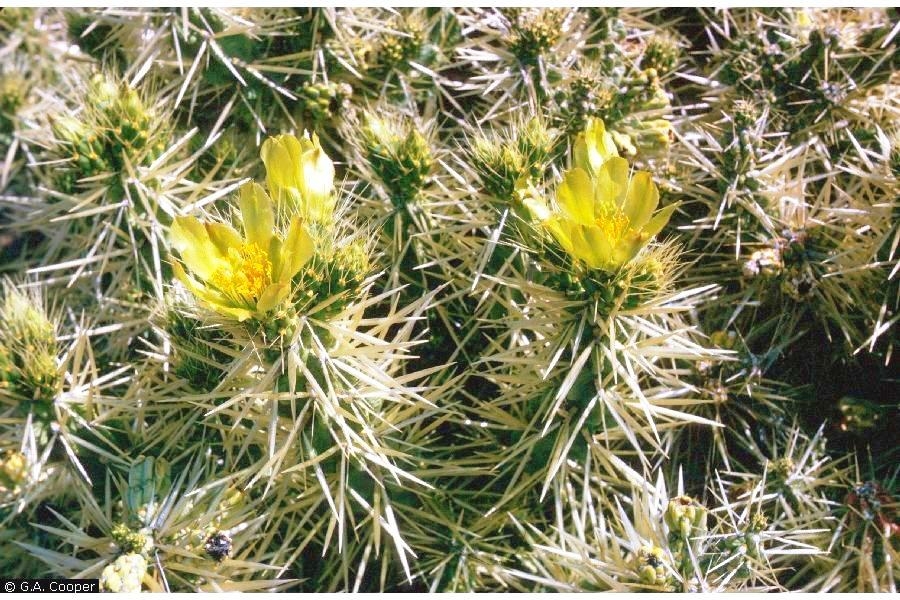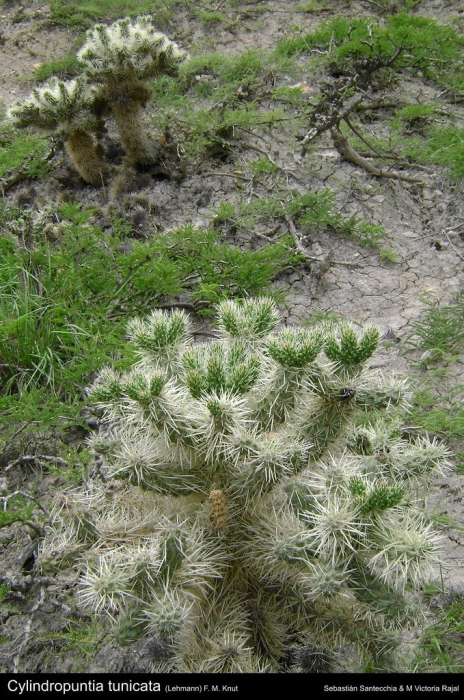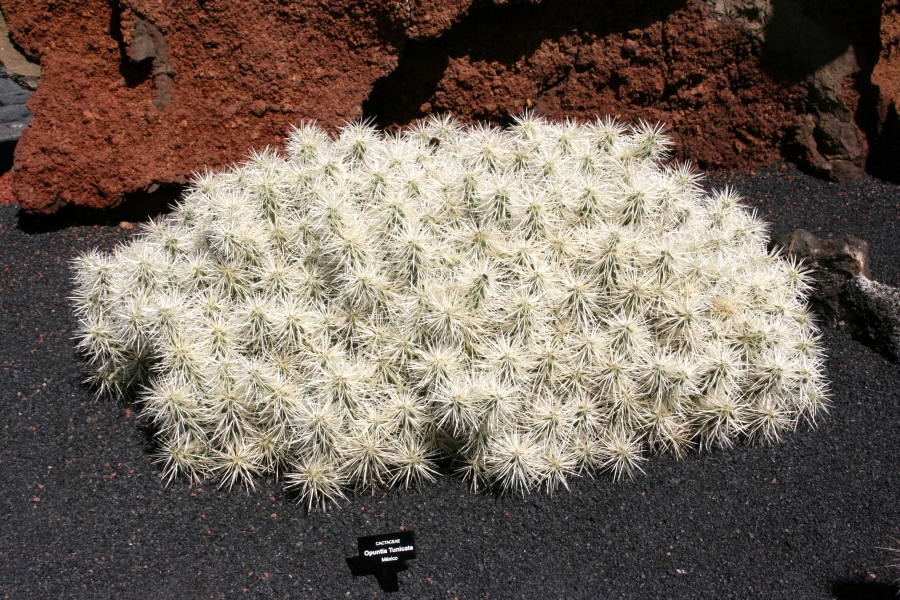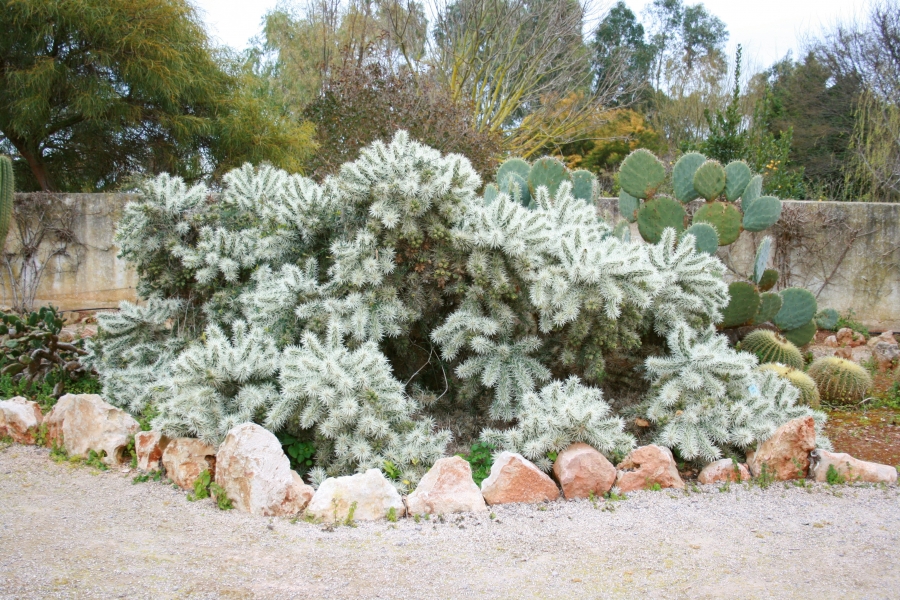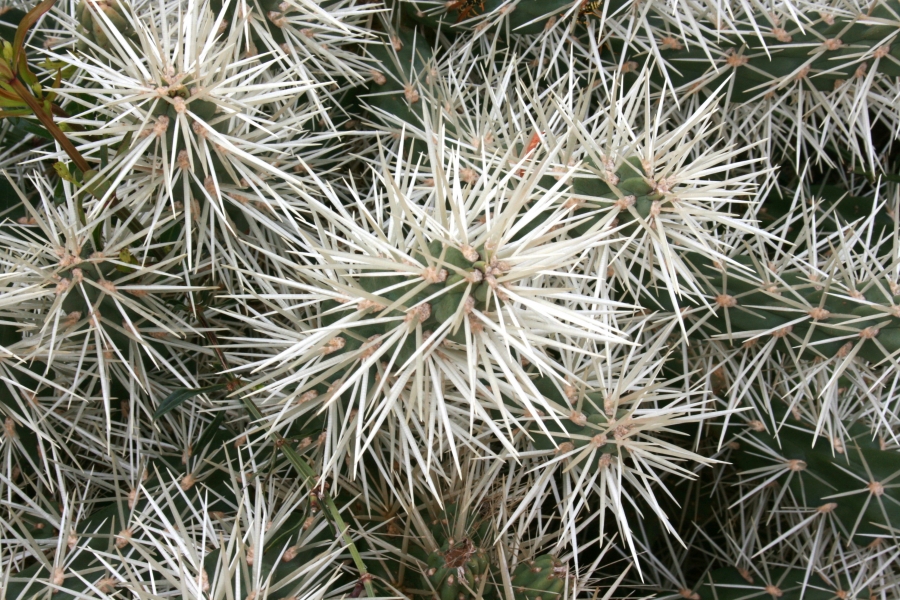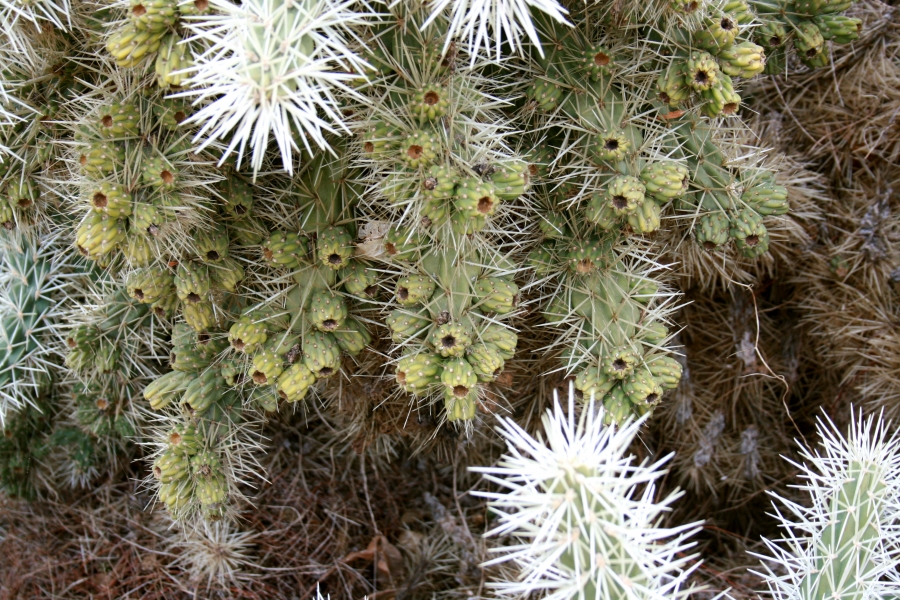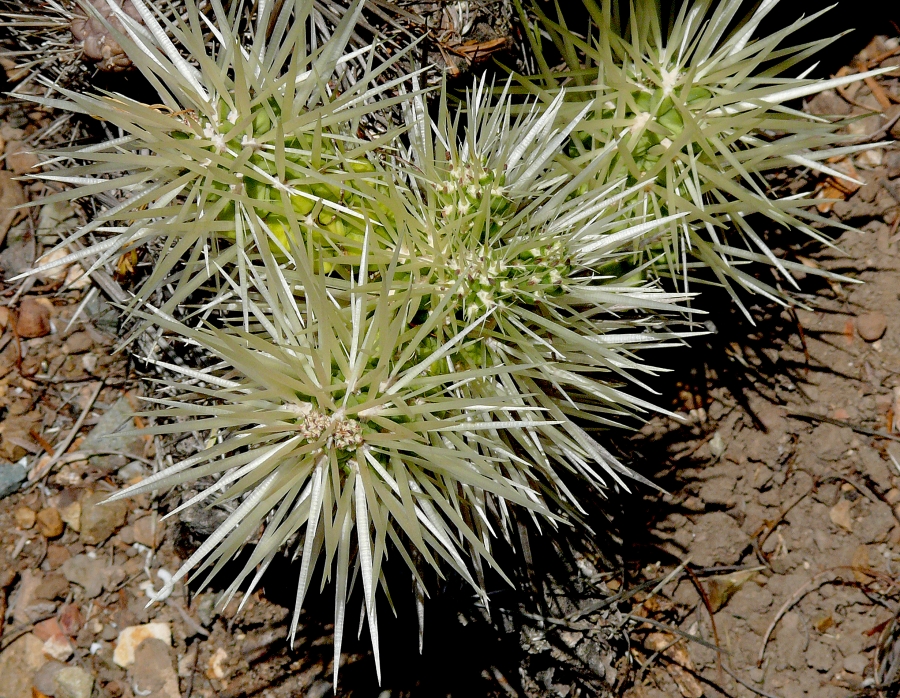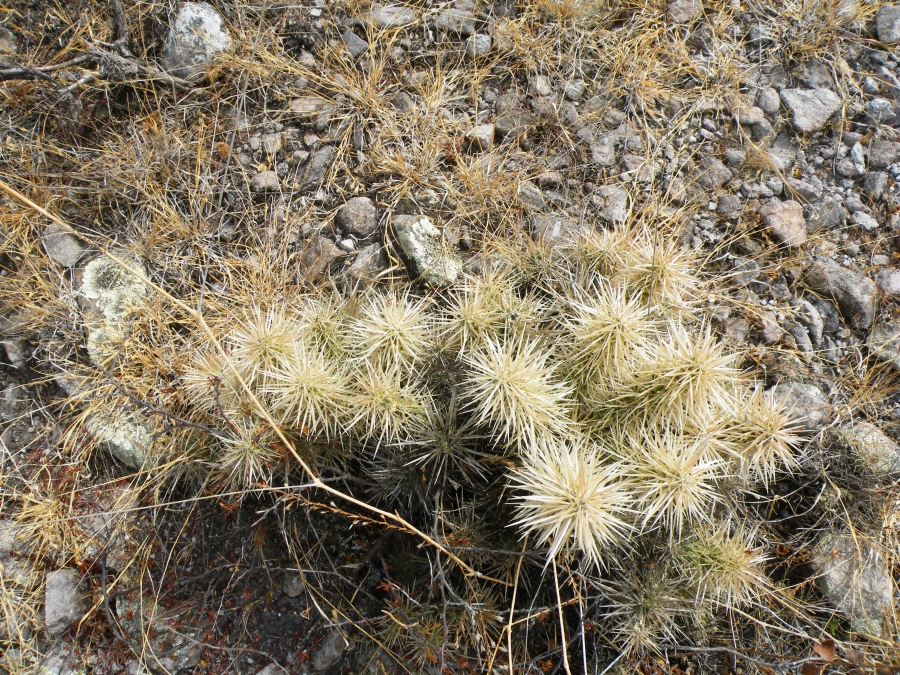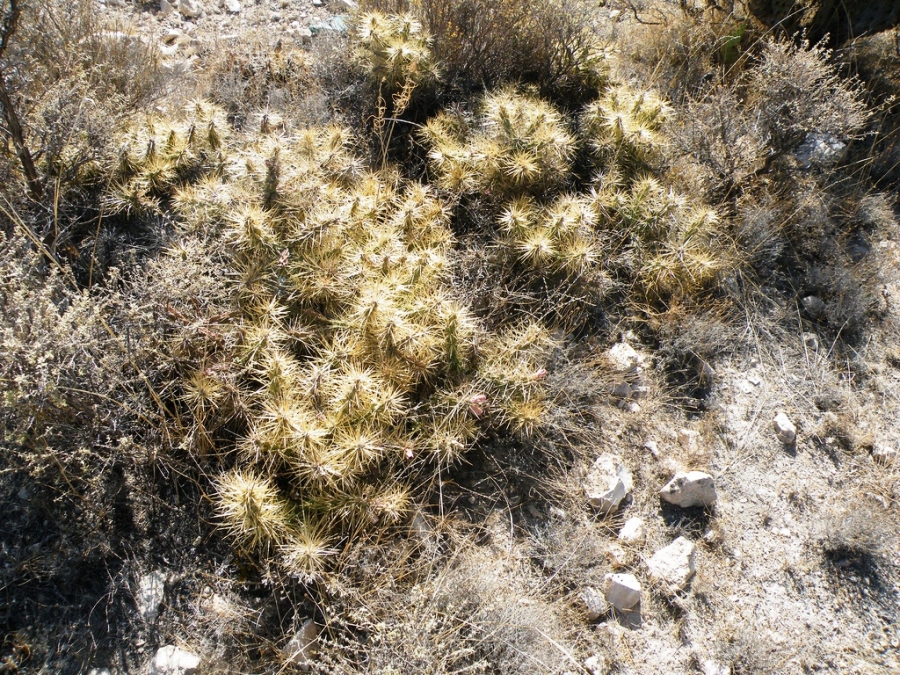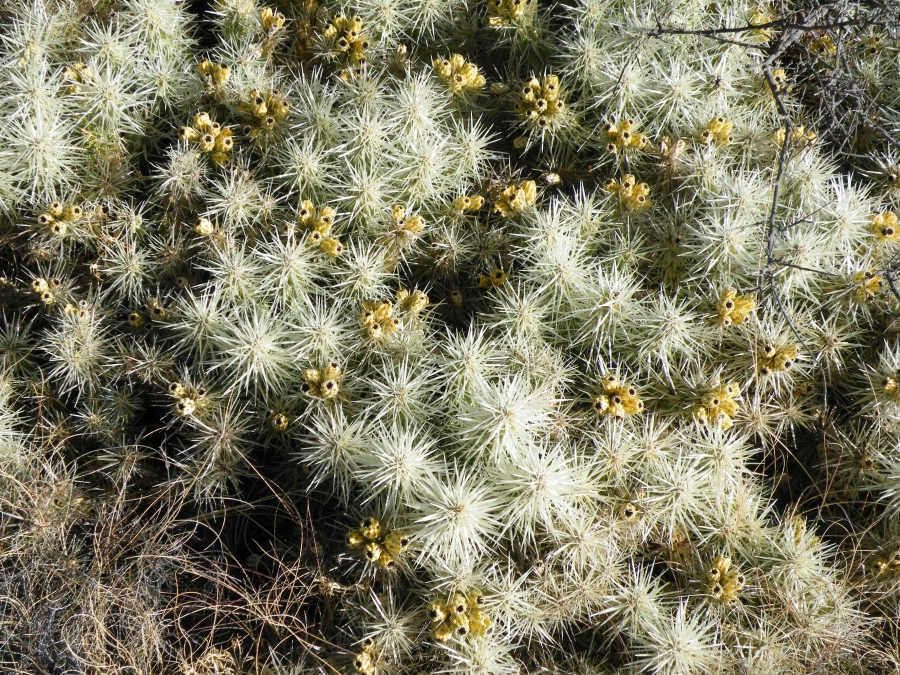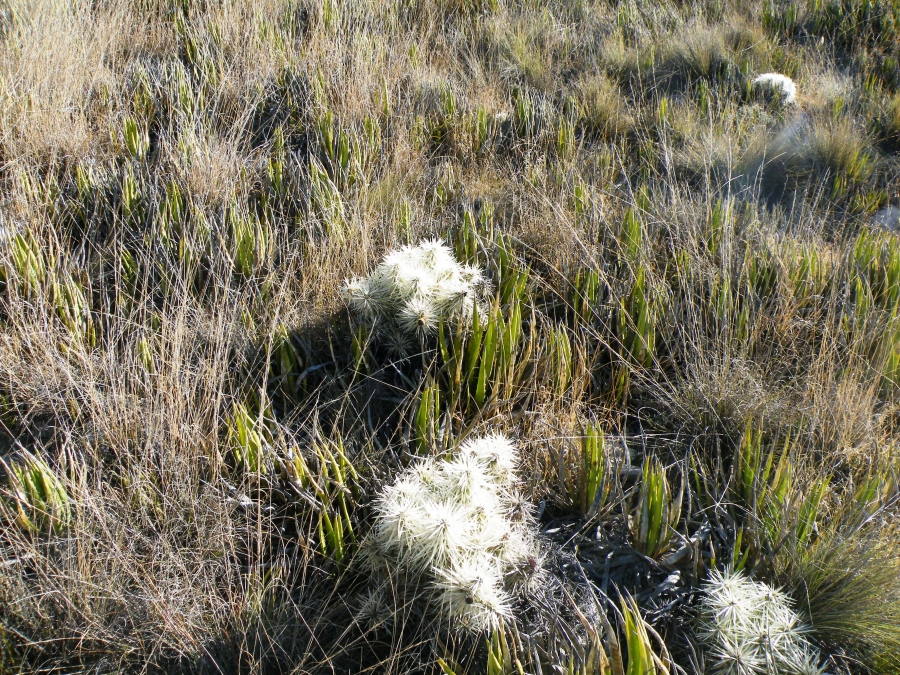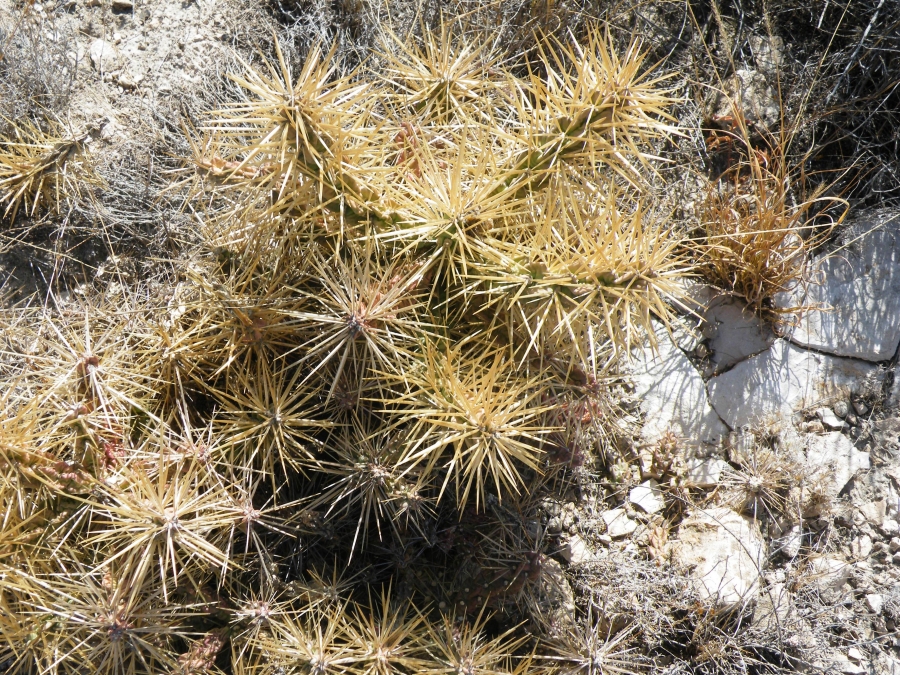(Lehmann) Link & Otto. 1837. Enumeratio Diagnostica Cactearum, 17.
Herbarium specimen; Herbarium specimen; Herbarium specimen; Herbarium specimen; Herbarium specimen; Herbarium specimen; Herbarium specimen; Herbarium specimen; Herbarium specimen; Herbarium specimen
Original description
Flora of North America treatment
What is Cylindropuntia tunicata?
Cylindropuntia tunicata is a Chihuahuan Desert cholla that generally grows on limestone slopes and alluvium from southern Texas into central Mexico. There are also populations in Ecuador and Chile. G. tunicata is a densely-branched shrub growing to 3 m wide.
Details
G. tunicata is a densely-branched shrub growing to 3 m wide. G. tunicata stems are easily detached and 5 to 25 cm long by 1.5 to 2.5 cm wide. The areoles have 5 to 12 white to yellow spines which nearly obscure the stems. The specific epithet “tunicata” refers to the very large, loose spine sheaths. The flowers are greenish-yellow with yellow filaments, green to reddish styles, and greenish-yellow stigmas. The fruits are yellow or yellow-green, often reddish, and pulply. The fruits are sparsely-spined to spineless and are usually sterile. G. tunicata is diploid (2n = 22).
G. tunicata has what is known as an “amphitropic distribution,” meaning that the species occurs in North America and South America but not in the tropics of Central America. Such distributions are often hypothesized to result from the spread of propagules by humans or other animals, where the species cannot establish in tropical environments (Anderson, 2001).
